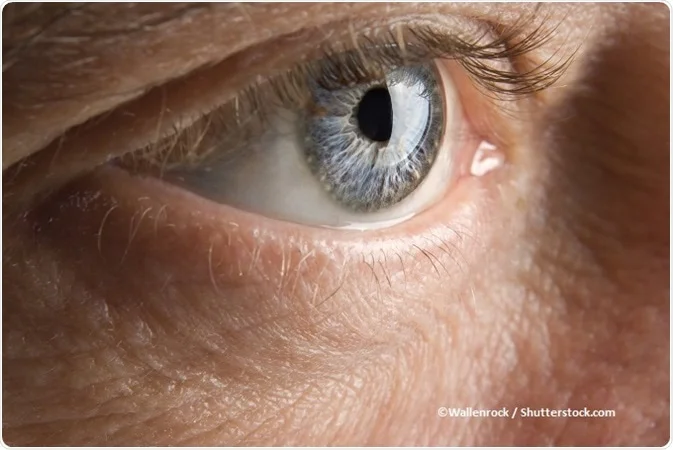Causes of Eye Cancer

There is however no direct association with these risk factors. This means that all those who have these risk factors may not develop eye cancers. Being aware of these factors, however, may help healthy lifestyle choices and avoidance of certain harmful exposures.
Risk factors associated with Intraocular melanoma
Intraocular melanoma is the commonest form of eye cancer. The commonly associated risk factors of this type of eye cancer are (1, 2, 3, 4):-
- Race or ethnicity – Caucasians or whites are at a higher risk of melanomas than African Americans or Asian Americans. Whites are also at a higher risk of skin melanomas. Eye melanomas follow a similar pattern in terms of risk association.
- Age – Primary intraocular melanoma commonly occurs after the age of 50. It is rare in children and those who are over 70 years of age.
- Sex – Eye melanoma affects both men and women with same frequency.
- Colors of the eyes or iris – Those with light colored eyes have raised risk of intraocular melanoma. Among those blue, grey or green or any light eyed individuals are at higher risk than brown eyed individuals. The actual reason is unknown but it is speculated that the risk assessment is similar to whites being more prone to skin and eye melanomas.
- Sun exposure – Too much sun exposure or exposure to ultraviolet (UV) rays (either from the sun or tanning beds) raises risk of skin melanomas. This is true especially in Caucasians and whites. There is no evidence however that this is true for eye melanomas but concerns that similar association might be true for eye melanomas.
- Inherited conditions – Those with conditions like dysplastic nevus syndrome are at a higher risk of eye melanomas. These individuals have over 100 abnormal shaped and sized moles over their skin. Those with abnormal brown spots on the uvea called nevus of Ota are also at risk of getting eye melanomas. Nevi or moles around or within the eye also raise the risk of eye melanomas. Individuals with brown spots over the uvea in a condition called oculodermal melanocytosis are at a higher risk of eye melanomas as well. Eye melanomas may also be inherited and may run in some families.
- Occupational hazards – Workers like farmers, fishermen, welders, or chemical and laundry workers have a greater risk of getting eye melanomas.
Risk factors associated with other types of eye cancer
- People with weakened or suppressed immune system like those with acquired immunodeficiency syndrome (AIDS), those on anti-rejection drugs after an organ transplant or elderly are at greater risk of primary intraocular lymphoma.Sometimes the risk of eye lymphoma is raised by infection with a bacteria called Chlamydophila psittaci. The bacteria is caught from infected domestic animals such as cats and birds. This leads lung infections and conjunctival inflammation or conjunctivitis. This bacteria is associated with adnexal malt lymphoma.
- Risk of squamous cell cancer of the eyes also rises with depressed immunity. Those with HIV AIDS infection and on drugs that suppress the immunity are at higher risks.Sometimes Human papilloma virus (HPV) may infect the eye causing squamous cell carcinoma of the eye. This virus is related to cancers of the cervix and mouth. Exposure to sun and UV rays also raises risk of this type of eye cancer.
- Kaposi sarcoma of the eye occurs more commonly in people with HIV or AIDS. This tumor is rare.
- Retinoblastoma – This type of eye cancer affects young children. The risk of this disease is carried in a faulty gene. This disease thus is inherited and leads to loss of vision or even death of the child if not detected and treated early.
